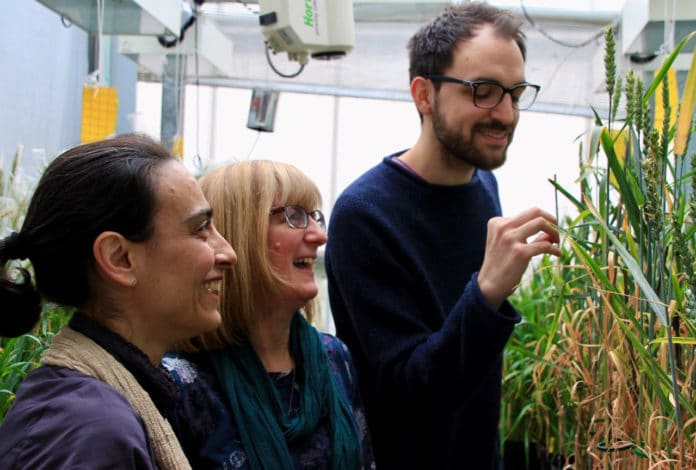Plants have Rubisco activase (Rca) that tells the plant’s energy-producing compound (Rubisco) to kick on in sunlight and signals it to stop when the leaf is deprived of light to preserve energy.
Now, scientists are swapping just one molecular building block out of 380 that make up an Rca in wheat. Doing so will enable it to activate Rubisco faster in hotter temperatures.
Elizabete Carmo-Silva, a senior lecturer at the Lancaster Environment Centre who oversaw this work for a research project called Realizing Increased Photosynthetic Efficiency (RIPE) said, “We took a wheat Rca (2β) that was already pretty good at activating Rubisco in lower temperatures and swapped out just one of its amino acids with one found in another wheat Rca (1β) that works pretty well in higher temperatures but is rubbish at activating Rubisco—and a result is a new form of 2β Rca that is the best of both worlds.”
Typically occurring wheat, Rca 1β has an isoleucine amino acid, works up to 39 degrees Celcius, yet isn’t great at activating Rubisco. In contrast, the normally happening 2β has a methionine amino acid, works up to around 30 degrees Celcius, and is good at actuating Rubisco. Here the group has made another variant of 2β with an isoleucine amino acid that works up to 35 degrees Celcius and is very acceptable at activating Rubisco.
Carmo-Silva said, “Essentially, 1β is a rubbish enzyme, and 2β is sensitive to higher temperatures. The cool thing here is that we have shown how this one amino acid swap can make Rca active at higher temperatures without really affecting its efficiency to activate Rubisco, which could help crops kickstart photosynthesis under temperature stress to churn out higher yields.”
“When looking at cowpea growing regions in Africa, it goes all the way from South Africa with an average around 22 degrees Celcius to Nigeria at about 30, and areas further north get to 38. If we can help Rubisco activate more efficiently across these temperatures, that is powerful and could help us close the gap between yield potential and the reality for farmers who depend on these crops for their sustenance and livelihoods.”
RIPE is engineering crops to be more productive by improving photosynthesis. They carried out this work in vitro in E. coli. The study is expected to aid to characterize and improve the Rca of other food crops such as cowpea and soybean, each with multiple different forms of Rca.
RIPE is supported by the Bill & Melinda Gates Foundation, the U.S. Foundation for Food and Agriculture Research (FFAR), and the U.K. Government’s Department for International Development (DFID).
Journal Reference:
- Gustaf E. Degen, An isoleucine residue acts as a thermal and regulatory switch in wheat Rubisco activase. DOI: 10.1111/tpj.14766
